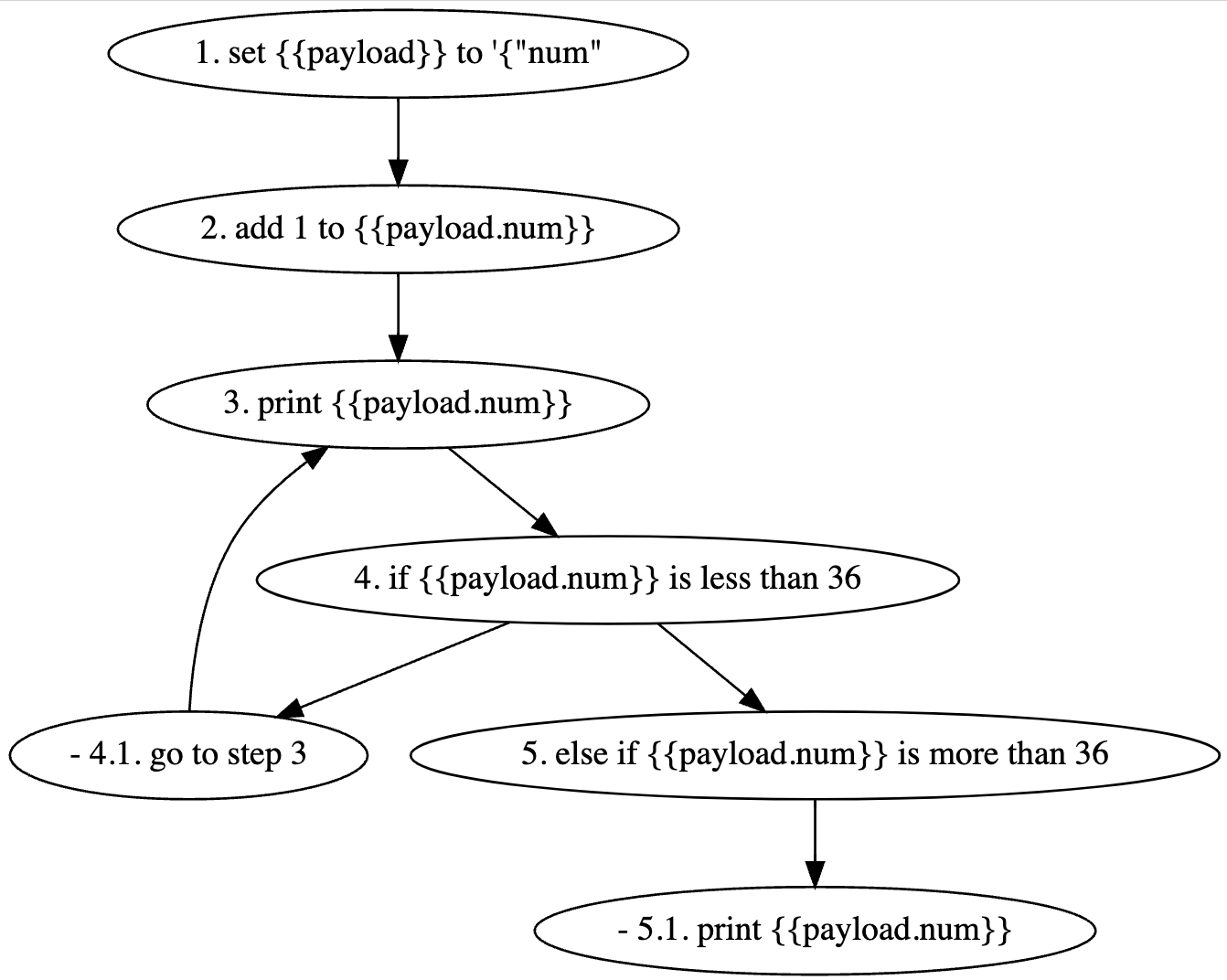Conditionals & Looping
The PAC-1 scripting language is Turing-complete, which means any logical function that can run in a Python script, can be programmed using it too.
Conditionals (if...else statements) are the only instance of forked branching where steps have two output channels - one which evaluates if the condition is true, and other if it is false.
If...Else conditionals
For instance, when the control flow reaches step 4, if it evaluates to true, then it passes to the fork step 4.1.
main.py
# if...then else conditionals.
1. set {{payload}} to '{"num": 29}'
2. add 1 to {{payload.num}}
3. print {{payload.num}}
4. if {{payload.num}} is less than 36
- 4.1. go to step 3
5. else if {{payload.num}} is more than 36
- 5.1. print {{payload.num}}Otherwise, if it evaluates to false, the control flow passes to step 5.
main.py
# if...then else conditionals.
1. set {{payload}} to '{"num": 29}'
2. add 1 to {{payload.num}}
3. print {{payload.num}}
4. if {{payload.num}} is less than 36
- 4.1. go to step 3
5. else if {{payload.num}} is more than 36
- 5.1. print {{payload.num}}PAC-1 interprets conditionals like this :

Looping and Recursion
The go to step can similarly be used to loop / recurse over a function.
main.py
# looping using go to
1. trigger on receive message
2. set {{payload}} to '{"num": 29}'
3. add 1 to {{payload.num}}
4. print {{payload.num}}
5. if {{payload.num}} is less than 36
- 5.1. go to step 3
6. else if {{payload.num}} is more than 36
- 6.1. print {{payload.num}}
7. respond back with {{payload}}